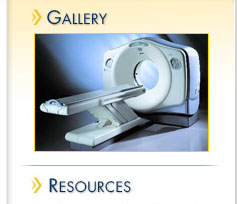 Married cancer patients live longer than single people who have the disease, suggesting that logistical and emotional support from a loved one may be far more critical to cancer care than previously recognized. Married cancer patients live longer than single people who have the disease, suggesting that logistical and emotional support from a loved one may be far more critical to cancer care than previously recognized.
Numerous studies have suggested that married people have better overall health than single people, but those data likely are skewed by the fact that healthy people are more likely to have opportunities to marry. However, the latest study did not look at overall health, and instead focused on what happens to married and single people who become ill with cancer. The findings offer a glimpse into the crushing logistical burden that cancer treatments impose on patients, particularly those who are single.
“When you have a spouse who is present when the patient is diagnosed, they are an invested party and they are going to more than likely make sure the patient goes to the doctor, that they get the necessary treatments,’’ said Dr. Ayal A. Aizer, chief resident of the Harvard Radiation Oncology Program and the study’s first author. “We don’t think there’s something intrinsic about people who are married, but we do think it’s the support marriage is providing that makes a difference.”
Researchers from several institutions, including Harvard Medical School and the Dana Farber Cancer Center, analyzed nearly 735,000 people who received a cancer diagnosis between 2004 and 2008. The study, which used data from the National Cancer Institutes Surveillance, Epidemiology and End Results (SEER) Program, focused on the 10 leading cancer killers: lung, colon, breast, pancreatic, prostate, liver, non-Hodgkin lymphoma, head and neck, ovarian and esophageal cancers.
The study, published in The Journal of Clinical Oncology, found that single patients were 53 percent less likely to receive appropriate therapy than married patients. The finding suggests that maintaining grueling chemotherapy and radiation schedules and taking medication as prescribed is easier for people who have help from a spouse compared with single people who must manage the logistics of cancer treatment on their own.
Unmarried cancer patients also were 17 percent more likely to have late-stage cancer at the time of diagnosis, compared with married patients. That suggests that spouses play a role in encouraging patients to see a doctor, while single people may put off doctor visits, resulting in a more advanced cancer by the time they finally seek a diagnosis. Married patients were 20 percent less likely to die of their disease than single patients.
Notably, men with cancer showed a greater benefit from marriage than did women. That doesn’t mean husbands are not supportive of wives, but instead suggests that single women do a better job of reaching out for social support than do single men, so the gap between single and married women with cancer is not as great as the gap between single and married men with cancer.
“Cancer is a life changing diagnosis,’’ said Dr. Aizer. “Patients have an enormous number of things to think about on top of what they do in their normal everyday life. It’s really important that they have another invested party to help shoulder that burden.”
|






